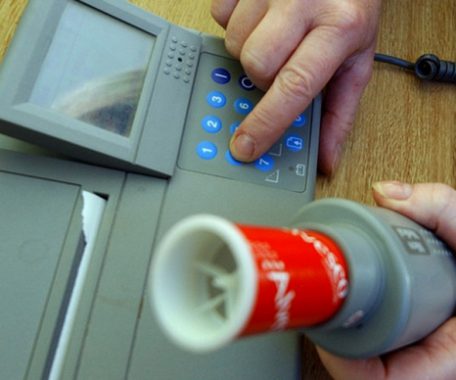GPs need access to spirometry to ‘prevent misdiagnosis of chronic lung disease’

Under and over-diagnosis of Chronic Obstructive Pulmonary Disease (COPD) in primary care highlights the need for adequate access to quality assured spirometry, a study has concluded.
The new research, presented today at the British Thoracic Society’s winter meeting, found that one in ten COPD patients were identified as having no definitive diagnosis, yet most were still being prescribed inhaled drugs for a condition they are unlikely to have.
The study of 16 479 anonymised COPD patients across Hampshire found that 10% (1,631) had no evidence of airflow obstruction to support their diagnosis, and yet 79% of that group were receiving inhaler treatments.
Researchers analysed data to review the characteristics, medication and other health conditions of patients diagnosed with COPD – specifically comparing those with, and without, evidence of airflow obstruction.
After removing asthma patients from the group 12,235 patients had a diagnosis of COPD, with 1,182 having no evidence of airflow obstruction from a spirometry test. Patients without airflow obstruction were more often female, had a higher mean BMI and contained proportionally fewer active smokers than those with persistent obstruction.
Only 28% of the 1,182 patients were receiving no respiratory treatment. 50% were receiving long-acting bronchodilator inhalers or inhaled corticosteroids, both of which are only recommended for confirmed moderate or severe COPD.
The research was initiated after the National COPD Audit Programme in 2016 revealed that in a quarter of cases nationwide spirometry values were not consistent with the given diagnosis of COPD.
Dr Lynn Josephs, lead researcher on the study and clinical research consultant fellow at The University of Southampton, said: ‘Both under-diagnosis and over-diagnosis of COPD highlight the need for access to spirometry in primary care.
‘We would encourage GPs and respiratory nurses to identify any patients being treated for COPD whose spirometry does not confirm their COPD diagnosis. We feel that patients without obstructive spirometry should be reassessed, in order to identify other causes for their breathlessness or cough.’
Dr Andrew Green, GPC’s clinical and prescribing policy lead, agreed that GPs must have access to spirometry.
‘The latest NICE guidance on asthma has highlighted the need for CCGs to commission within primary care “one stop” diagnostic hubs for asthma, where spirometry will be provided. Those hubs should also provide spirometry for suspected COPD,’ he explained.
‘It is inexcusable that some CCGs do not fund spirometry within primary care and GPs are being expected to provide it without the resources to do so.’
This comes after GPs were urged in early 2017 to review all their COPD patients who were taking inhaled steroids following new treatment guidelines from the international Global Initiative for Chronic Obstructive Lung Disease (GOLD) network.
NICE is currently working on updating its COPD recommendations with the final guidelines expected next year.
Pulse recently reported on the new NICE guideline on asthma which recommends using spirometry to diagnose asthma in both children and adults.
At the same time, GPs have warned that an NHS England push for GPs and practice nurses to get certified to perform spirometry will lead to practices dropping spirometry altogether.
Although NHS England has not said how the certification would be enforced in practice, it has emerged that CQC inspectors are to start routinely checking whether GPs and nurses are certified, citing this as being ‘best practice’.
Pulse October survey
Take our July 2025 survey to potentially win £1.000 worth of tokens

Visit Pulse Reference for details on 140 symptoms, including easily searchable symptoms and categories, offering you a free platform to check symptoms and receive potential diagnoses during consultations.










